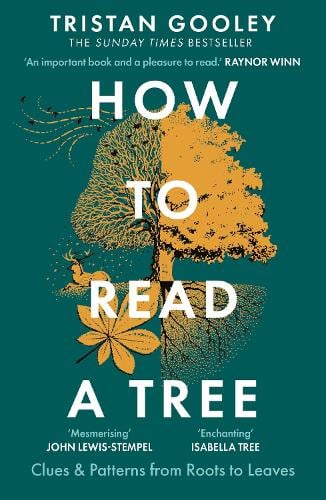
It may be that you have heard the – memorable – name Tristan Gooley, author of this and other books; you may have already explored his world of books, focussing on reading the landscape, weather, sun, moon, trees, plants and animals in order to navigate safely using the “outdoor clues and signs”.
This book “How to read a Tree”, focusses in on the title subject only, and sets out to highlight “clues and patterns from roots to leaves”.
Tristan Gooley is a very practical man, who enjoys and appreciates the natural landscape, but who is also very inquisitive; where he notices change, he explores the reason for it and the lessons to be learned.
In this book the focus is wholly on the tree, and, as he says in the introduction to the book:
“Trees …will tell us about the land, the water, the people, the animals, the weather and time…trees tell a story, but only to those who know how to read it!
The book unpicks the story the tree may tell us topic by topic, covering both the tree elements themselves separately: roots, trunk, bark, branches and leaves and the impact of the tree on the environment as well as the reverse.
Tristan has as an objective that, should we choose to do so, we will be able to firstly identify the signs that he has described, but also to understand why they occur and what they signify for us when walking through the countryside. He sets out to rekindle the childish curiosity that we all have within us, and to feel the satisfaction from reading the clues the trees offer.
The wiring style is easy to read, rather than didactic and stiff, interspersed with anecdotes to bring alive his own journey of discovery and explanation of the clues in the trees he describes.
Of course, every reader brings some experience of trees, and so can immediately recognise some of the clues and explanations that are recorded, but I can honestly say that this book has started me looking more carefully at trees, with more knowledge, to identify a broad range of further clues and signs I was not aware of.
I wonder if you will feel the same.
Article by George Kirby

